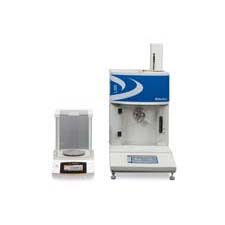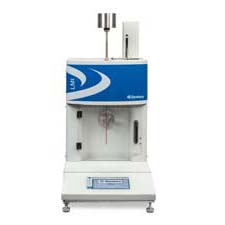A Melt flow Indexer, is a laboratory instrument that provides a measurement of melting plastics by maintaining a specific temperature range, while employing a target load on the plastic specimen. Thus creating a flowing material that can be measured in grams per ten minutes (per the ASTM D1238/ISO 1133 standard) providing vital material properties for applications in the plastic extrusion process.
A Melt flow Indexer, is a laboratory instrument that provides a measurement of melting plastics by maintaining a specific temperature range, while employing a target load on the  plastic specimen. Thus creating a flowing material that can be measured in grams per ten minutes (per the ASTM D1238/ISO 1133 standard) providing vital material properties for applications in the plastic extrusion process.
plastic specimen. Thus creating a flowing material that can be measured in grams per ten minutes (per the ASTM D1238/ISO 1133 standard) providing vital material properties for applications in the plastic extrusion process.
The Dynisco LMI5000 series laboratory Melt Flow Indexer meets, or exceeds both of the relevant ASTM and ISO standards.
The ASTM/ISO standard determines the guidelines of the apparatus, and the actual test procedures for testing the melt flow indexer of 90% of the polymers known to exist.
By using the tables contained in the standards, we can use the melt flow indexer to either publish melt flow rates on resins being made, or to qualify resins that are purchased by outside vendors.
The most common is test method “A” per the ASMT D1238, where the operator will supply a specified amount of material (Pellet/Powder/or Flake) and charge the barrel.
A temperature and weight load is selected that is in conformance with the tables found within the standard, and the material is exposed to this temperature for a perscribed “melt period” of 360 seconds typically.
Once the melt time has expired, the target weight load associated with the polymer family is applied to the specimen in the barrel via a piston assembly.
As the test proceeds, the piston decent is observed by the operator until the target travel has been completed (marked by scribe lines on the piston itself)
The specimen is collected over a period of one minute , and then the weight of the melted polymer is captured by using a blance.
This value is multiplied by ten, to determine the melt flow index expressed in grams per ten minutes.
Melt Flow Rate will help determine the force and temperature needed in the process to maintain consistant product quality, without creating waste material.










